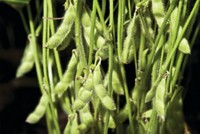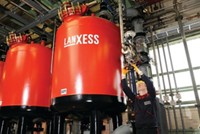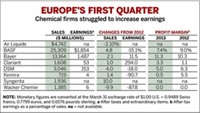Advertisement
Grab your lab coat. Let's get started
Welcome!
Welcome!
Create an account below to get 6 C&EN articles per month, receive newsletters and more - all free.
It seems this is your first time logging in online. Please enter the following information to continue.
As an ACS member you automatically get access to this site. All we need is few more details to create your reading experience.
Not you? Sign in with a different account.
Not you? Sign in with a different account.
ERROR 1
ERROR 1
ERROR 2
ERROR 2
ERROR 2
ERROR 2
ERROR 2
Password and Confirm password must match.
If you have an ACS member number, please enter it here so we can link this account to your membership. (optional)
ERROR 2
ACS values your privacy. By submitting your information, you are gaining access to C&EN and subscribing to our weekly newsletter. We use the information you provide to make your reading experience better, and we will never sell your data to third party members.
Business
Season In The Sun
Strong year for European agrochemical producers is overshadowed by impending legislation
by Patricia L. Short
September 22, 2008
| A version of this story appeared in
Volume 86, Issue 38

FOR EUROPEAN chemical companies that specialize in crop protection, the year started out well and promises to continue that way. However, just as farmers do, chemical makers are keeping an eye on the clouds on the horizon.
The cloud now is new legislation going through the European Union decision-making procedure. It is intended to replace Directive 91/414/EEC, which was drafted in the 1980s for agrochemical control.
The package was first proposed by the European Commission in July 2006. The commission incorporated amendments suggested in a first legislative reading, and the legislation is now ready for a second reading by the European Parliament later this year or early next year.
It is common for industry trade groups to lobby against laws that tighten controls over their sectors. But this time, there is a profound change in the philosophy shaping the legislation, says Friedhelm Schmider, director general of the Brussels-based European Crop Protection Association.
Until now, safety assessments of crop protection chemicals have been based on risk; that is, whether the ways chemicals are used could lead to actual environmental contamination or toxic exposure. The new legislation, however, has adopted the base of hazard—the intrinsic toxicity of a type of chemical that is, by definition, a means of killing plant pests.
At the beginning of this decade, which was the last time European crop-chemical legislation was tightened up, some 700 substances out of about 1,200 were withdrawn from the market. For the most part, products were withdrawn because marketers couldn't justify the expensive testing needed to maintain their registrations. Now, with the new legislation, even some government regulators fear an equally dramatic purge of crop protection products, including the elimination of chemicals that are safe in practice.
"We're disappointed in the approach the EU is taking—moving away from risk to hazard," said Michael Mack, chief executive officer of the crop protection chemical giant Syngenta, at the firm's half-year press conference in July. "This is exactly the wrong thing to do in the midst of a food crisis."
The commission "is moving away from what had been a very good regulatory system," added John Atkin, Syngenta's chief operating officer. The proposed legislation "doesn't take into account how the product is used, how it is produced, and so on," he said. One way to coexist with such a regime, Mack adds, will come through innovation. As he puts it, "We have a very modern portfolio, so we won't be directly affected, but many will."
RÜdiger Scheitza, a board member at Bayer CropScience, is also concerned about the legislation. "The problem we see in Europe is that, more and more, people are deviating from risk assessment to use hazardous assessment for marketing and legislative decisions," he said at Bayer CropScience's annual press conference earlier this month. "No other region in the world is moving away from asking what risk there is for consumers from the active ingredients" and focusing instead on theoretical hazards, he said.
The only good thing about such legislation, he added, is that "it will mean that companies like us—very innovative—will have the ability to survive and even gain market share."
Scheitza concedes, "The law is already so advanced, we can't prevent it now. We can only try to persuade politicians not to handle it out of scope."
DESPITE EUROPE'S stern new stance toward crop protection chemicals, European producers are continuing their heavy R&D and production commitments. This year, BASF will spend $460 million—23% of its $2 billion R&D budget—on agricultural products, company executives said at a press conference in Washington, D.C., this spring (C&EN, May 26, page 24).
And at Bayer CropScience, planned R&D spending from this year through 2012 is about $4.8 billion. About 80% of that will go to innovative crop protection active ingredients and the remainder to new seed and plant biotechnology, said Friedrich Berschauer, Bayer CropScience chairman.
Syngenta's R&D spending is also increasing—$460 million in the first six months of the year, Mack said at the company's press conference. That is up from $386 million in the first six months of 2007.
But when first-half sales are up 20% and operating profits jump 33%, as happened at Syngenta, companies can afford to invest. That is true especially when marketers see positive signs continuing through the remainder of the year. "The strong first-half performance and good prospects for the Southern Hemisphere season enable us to raise our target for full-year earnings-per-share growth to over 35%," Mack said.
At the Bayer CropScience press conference, Berschauer noted that his company achieved record sales—up 19% in the first half of 2008—and an increase in operating earnings of 24%.
Berschauer cautioned, however, that such strong growth probably will not continue into the next couple of years. This year, he said, high commodity prices convinced farmers to invest. "It would be wonderful to see growth of 10% or more next year," he said, "but I think it will be less. This year is an exceptional year."
That same assessment is shared by his counterparts at other companies. Reaffirming his comments from Syngenta's press conference, Mack said in a recent interview with Reuters that he doesn't expect to match 2008 growth rates in 2009. The market responded coldly: Syngenta shares dropped by 5% the day the interview appeared. The market's response was uncalled for, suggests Martin Voegtli, an analyst at Swiss bank Sal. Oppenheim. "Any analyst that modeled for 2009 the same growth we see this year is being highly optimistic and not realistic," he says.





Join the conversation
Contact the reporter
Submit a Letter to the Editor for publication
Engage with us on Twitter